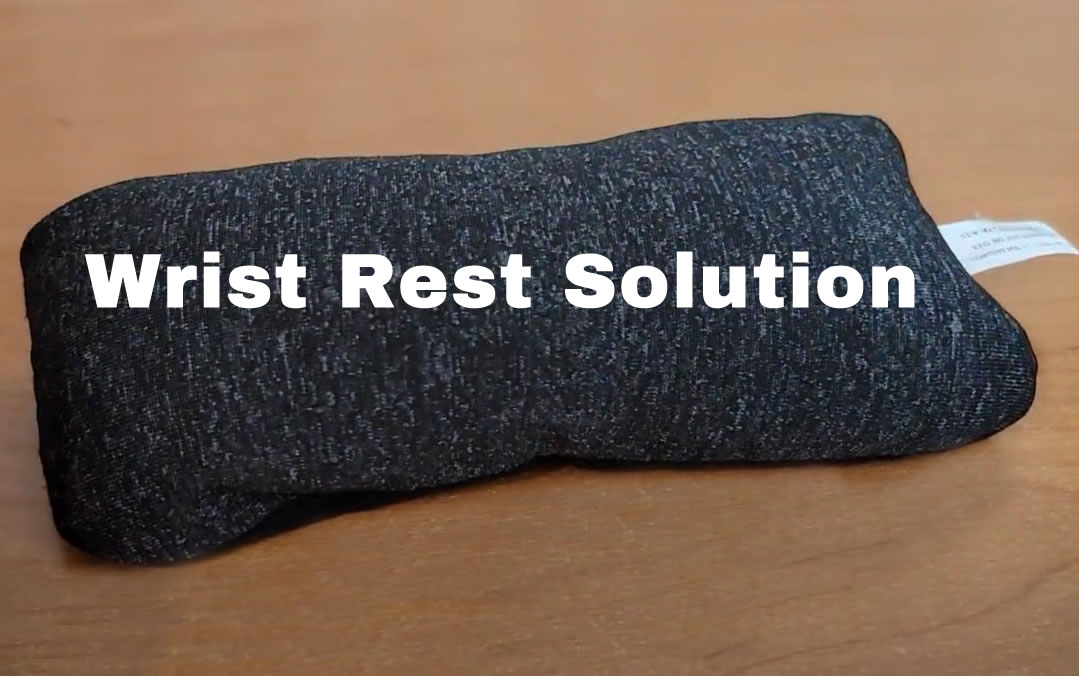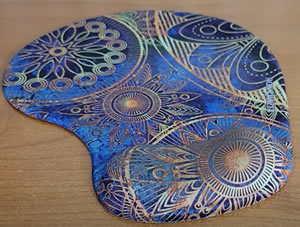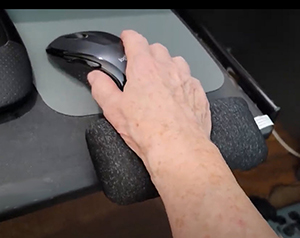Over the years, I’ve made a number of purchases trying to find the best wrist rest to use with my desktop computer mouse. I’ve tried working without a wrist rest, too. But even though my keyboard and mouse sit on a keyboard tray that’s ergonomically correct for me, working without any support made my wrist and hand hurt.
Gel Pad Attached to Mousepad
In the past, I used a mouse pad with a gel pad attached. (The blue one in the photo is the most recent.) It let me move the mouse smoothly and gave me enough cushioning to work for hours each day without making my wrist hurt or my hand get numb. And it stayed in place on the keyboard tray.
This page contains one or more affiliate links from which we may make a commission if you make a purchase through the link. Learn more.
But then a couple of years ago, I fell on black ice and broke my wrist in several places. After surgery, the wrist healed well. But even after it healed, using a gel pad was uncomfortable. It felt too hard and put too much pressure on the underside of my wrist, especially if my wrist wasn’t right in the middle of the pad. If I worked for more than an hour or so, my hand and fingers would stiffen up or get numb.
The Best Wrist Rest (for me)
I looked around for other options and decided to try a beaded wrist rest. My thought was that it would be softer and support the wrist and base of my hand no matter what way I twisted my hand as I maneuvered the mouse.
And I was right. It was the perfect solution for me. It had a soft surface that was comfortable under my wrist. I could work longer without my wrist hurting or my hand getting numb. And the beaded filling let me roll my hand easily from side to side as I moved the mouse. There was one problem:
The beaded pad kept falling off the keyboard tray onto the floor.
Related Content:
How to Keep a Wrist Pad from Falling on the Floor
I didn’t want the entire wrist pad glued to the keyboard tray or mouse tray. I wanted it to be able to move… but not fall off the keyboard tray. While I was looking at sewing notions in Walmart one day, I realized I might be able to solve the problem by using Velcro to attach the bottom edge of the beaded pad to the bottom edge of a plain mouse pad.
I found a package that contained a strip of peel-and-stick Velcro fasteners. The strip was about two feet long and three-fourth of an inch wide. It was inexpensive and from using Velcro in the past, I knew it could be easily cut into whatever size I wanted. Then I went to the electronics section and got a flat, cheap mouse pad.
When I got home, I snipped the Velcro into three short pieces. I attached hook side of each piece of Velcro to the bottom edge of the wrist rest.
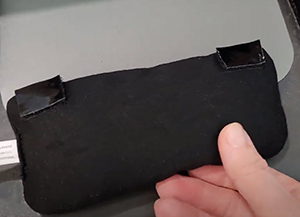
I attached the loop side of each piece of Velcro to the bottom edge of the mouse pad. Then I put the Velcro end of the wrist rest on top of the Velcro on the mpad and and tried it out.
It worked perfectly. Attaching the bottom edge of the beaded wrist rest to the bottom edge of the mouse pad let the beaded support roll back from the edge of the mouse pad if my hand moved backwards but kept it from falling off the keyboard tray onto the floor.
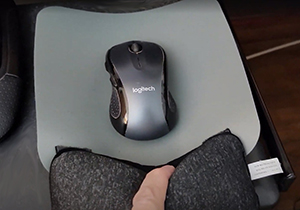
The only problem with this solution is that the Velcro comes unglued from the fabric once in a while. When it does, I just replace it with another little piece of Velcro.
Additional office equipment tip: Fix for faded keyboard keys
